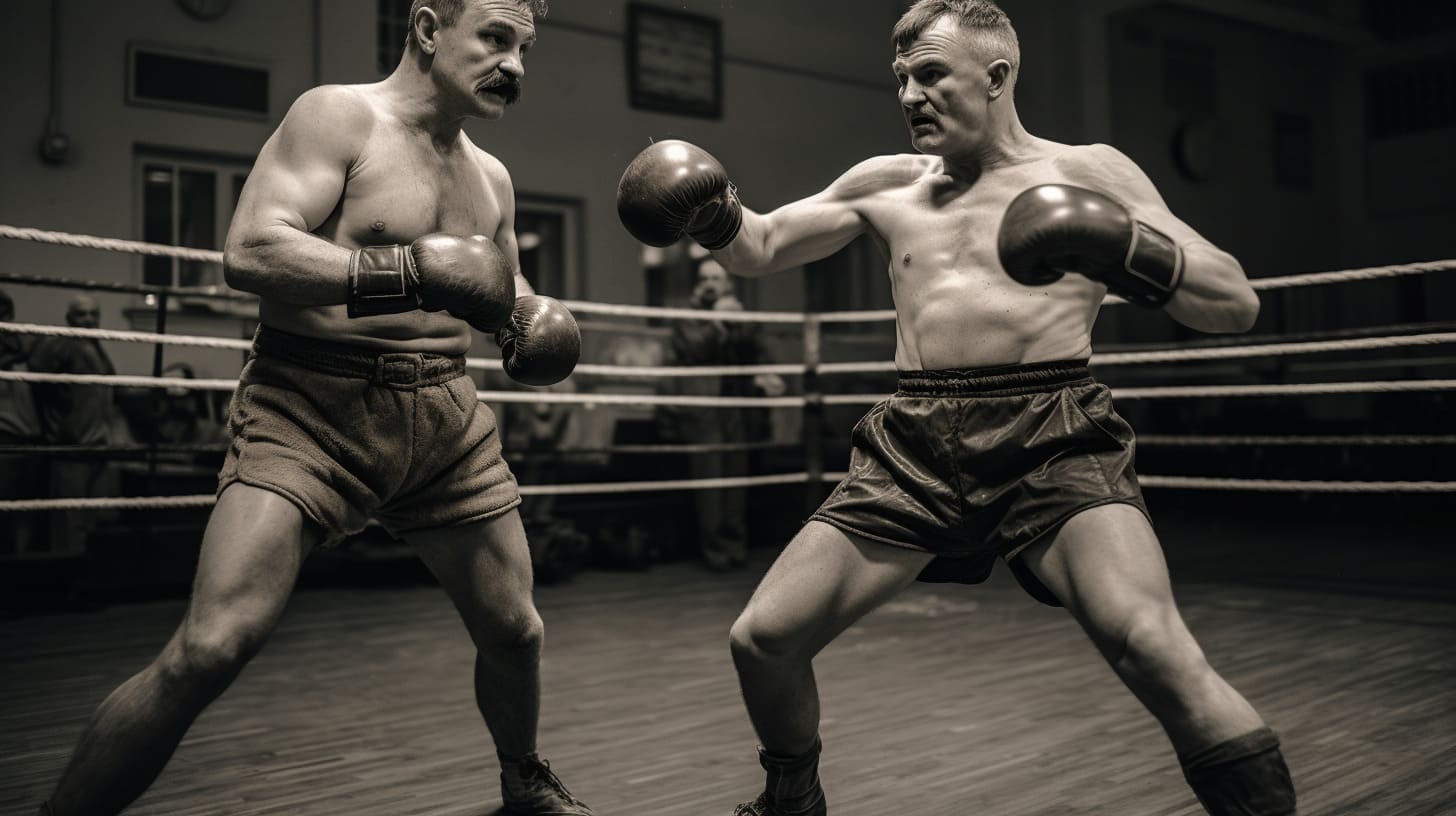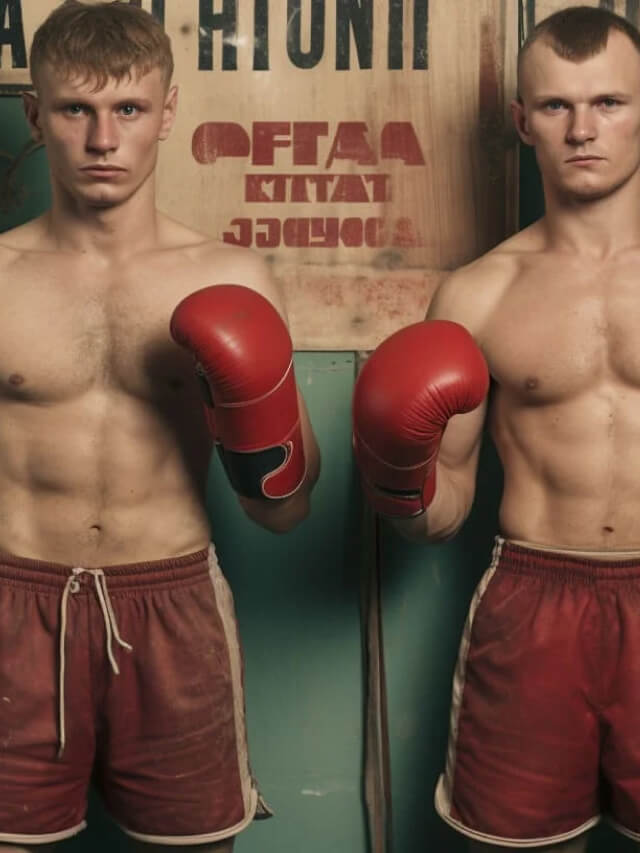The Soviet Union left an unforgettable mark on boxing with its special and powerful style. This approach not only made champions, but also changed how people view and practice boxing. To understand the Soviet style, let’s look at its beginnings, techniques, and influence.
The Soviet style first appeared in the early 1900s. It was a response to Western boxing, which relied on strength and anger. Soviet boxers wanted to use technique and planning instead. They trained hard to increase their speed, agility, accuracy, and versatility in attacking and defending.
Footwork was important to the Soviet style. Boxers had to move around the ring quickly, changing positions and angles to attack and dodge. This let them control the fight.
Planning was also part of it. Boxers examined their opponents and planned according to their weaknesses and strengths. It was about using their strengths and taking advantage of the opponent’s weaknesses. This flexible thinking was something that set them apart.
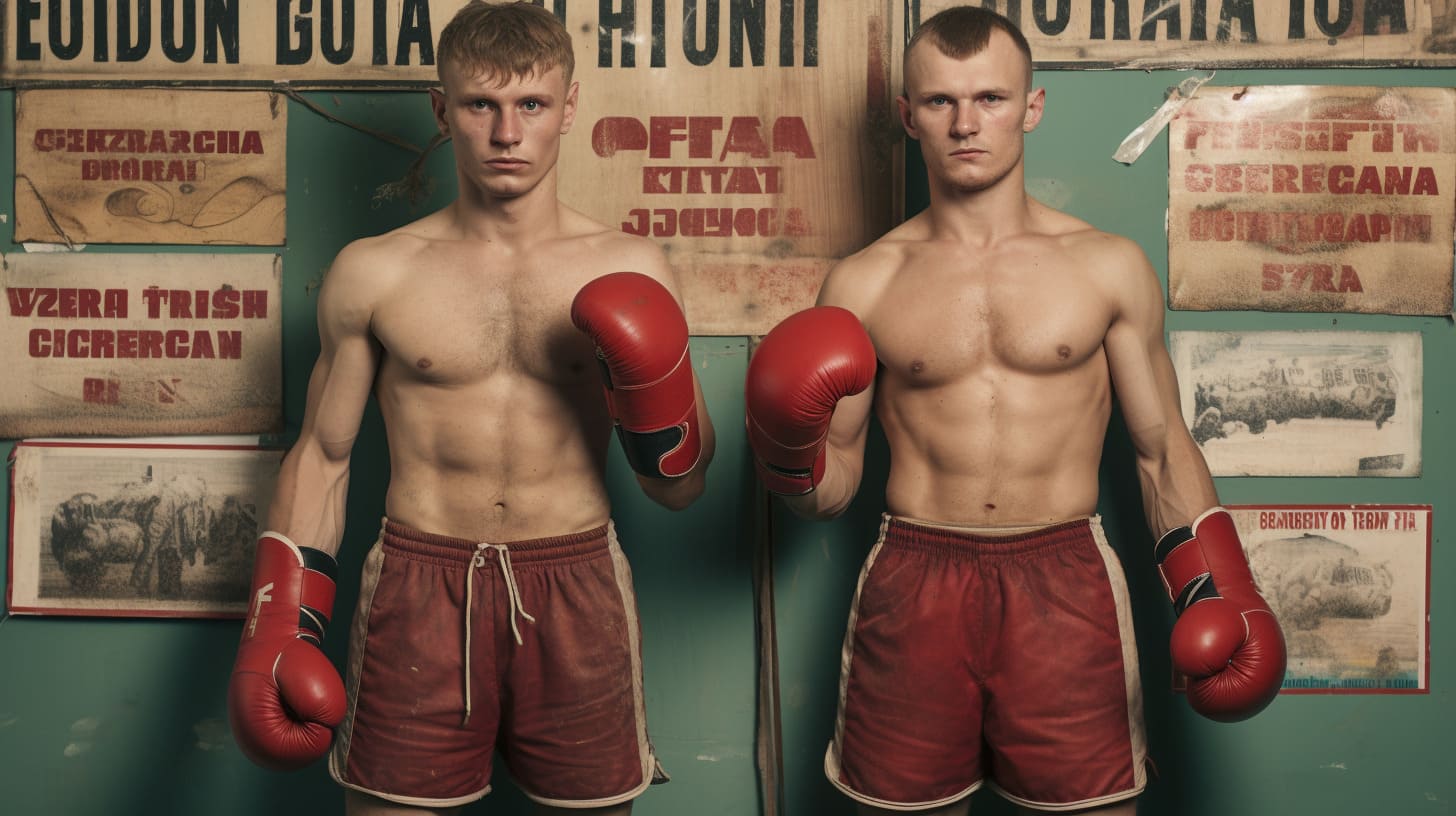
To use the Soviet style, practice footwork drills. Move fluently and position yourself for attacking and defending. Also, study your opponents before a fight. Identify their patterns and plan accordingly.
By applying the Soviet style – combining technique with planning – your boxing improves. Remember, boxing is not just about strength. It’s a combination of finesse and strategy. Follow the Soviet tactics and become a more powerful and skillful fighter.
The History of Soviet Boxing Style
The Soviet boxing style, a unique and formidable approach to the sport, has its roots deeply embedded in the history and culture of the former Soviet Union. This section delves into the origins and evolution of this distinctive style, shedding light on the factors that shaped it and its impact on the world of boxing.
The 1920s to 1991 saw the birth of the Soviet boxing style! It was bred in the Soviet Union, and was created to showcase power and dominance as an expression of Communist ideology. Traditional Russian fist fighting, Western boxing techniques and Leninist principles all contributed to this unique style.
The Emergence of Soviet Boxing
Boxing, as a sport, was not immediately embraced in the early Soviet Union. Initially viewed with skepticism, it wasn’t until the 1920s and 1930s that boxing began to gain popularity. This period marked the beginning of the Soviet Union’s journey in refining and developing its own unique style of boxing.
Key Factors in the Development of Soviet Boxing:
- Influence of Russian Martial Arts: Traditional Russian martial arts played a significant role in shaping the Soviet boxing style.
- State Support: The Soviet government’s support for sports, including boxing, was pivotal in its development.
- Focus on Technique and Strategy: Emphasis was placed on technical prowess and strategic planning over sheer physical strength.
The Golden Era of Soviet Boxing
The 1950s to the 1980s: Rise to Prominence
This period is often referred to as the golden era of Soviet boxing. It was during these decades that Soviet boxers began to make a significant impact on the international stage, showcasing their unique style and earning global recognition.
Notable Achievements in the Golden Era:
- Olympic Success: Soviet boxers achieved remarkable success in Olympic competitions, winning numerous medals.
- World Championships Dominance: Their dominance in various world championships further cemented their reputation.
- Development of World-Class Boxers: The era produced several world-class Soviet boxers who competed at the highest levels.
Characteristics of Soviet Boxing Style
The Soviet boxing style is distinguished by its focus on technical skill, strategic thinking, and remarkable endurance. This style contrasts with more aggressive, power-based boxing styles prevalent in other parts of the world.
Technical Skills
Soviet boxers were remarkable in their technical skills. Precision, agility, and strategic execution were the hallmarks of their performances. As a result, they dominated in the ring and left a lasting impact on boxing.
Strength
They had powerful punches, honed by extensive training and conditioning. And they were accurate too!
Footwork
Their footwork was both graceful and tactical. Moving around the ring with quick steps and pivots, they created angles to their advantage and evaded their opponent’s attacks.
Defensive Skills
Slipping, ducking, blocking, and parrying were all mastered by Soviet boxers. They could avoid and neutralize their opponent’s strikes.
Counter-Attacking
Their timing for counter-attacks was perfect. When their opponents launched offensives, they responded with swift and powerful counter-punches, catching them off guard.
Physical Conditioning
Their physical conditioning was simply unmatched. They had remarkable stamina, endurance, and strength.
Mental Toughness
Soviet boxers were incredibly composed and focused in the ring. Even under pressure, they made strategic decisions.
Pro Tip: To develop your technical skills in boxing, focus on perfecting your punching technique through practice and conditioning your body for agility and endurance. Train your mind as well as your body for the best performance.
Tactical Approach
Soviet boxing style is known for its tactical approach. It is distinct from other styles with several elements that contribute to the success of Soviet boxers. These elements are:
- Aggression means constant pressure on opponents.
- Footwork involves agility and precision, creating openings for punches.
- Defense is about head movement and blocking.
- Counterattacks capitalize on opponents’ mistakes.
- Strategic ring control dictates the pace and position.
These elements work together to create an offensive force with a defensive base. To improve one’s own boxing skills, it is beneficial to incorporate some of these tactics in training.
Focus on footwork drills to enhance movement and agility. Emphasize aggression and defense to maintain control. Develop counterattacking skills to exploit adversaries’ weaknesses.
By incorporating these into training, one can adopt a more tactical approach. However, consistency and practice are key to mastering these skills and using them effectively.
Training Methods
Soviet boxing training was intense and effective! It mixed physical conditioning, technical drills, and strategic planning to create skilled and formidable boxers. Here are five key elements of their methods:
- Stress on strength and endurance. Weightlifting, circuit training, and long-distance running were used to gain explosive power and stamina.
- Technical precision. Boxers spent many hours perfecting their footwork, punches, defensive moves, and overall ring strategy.
- Scientific approach. Sports science was used to analyze and raise performance. Biomechanics, physiology, nutrition, and psychology were explored.
- Mental toughness. Visualization exercises were included to teach boxers to withstand pain, exhaustion, and pressure during fights.
- Comprehensive sparring. Sparring wasn’t just about testing skills; it was a part of tactical development. Intense sparring sessions simulated real fight scenarios.
Discipline and commitment were also vital. Each boxer had to follow their coach’s training plan.
At the 1976 Montreal Olympics, the undefeated Teofilo Stevenson from Cuba fought Aleksandr Tikhonov from the Soviet Union. Despite Stevenson’s reputation, Tikhonov’s technique and superior conditioning earned him the win.
The Soviets’ training style created a generation of boxers who dominated the sport. This legacy still influences and inspires coaches and boxers globally.
Influences on Soviet Boxing Style
To better understand the influences on Soviet Boxing Style, explore the sub-sections briefly. Traditional Russian Martial Arts and the Soviet Sports System played a significant role in shaping this distinctive boxing style. The Soviet boxing style has left an indelible mark on the sport worldwide. Its influence is seen in various boxing techniques and strategies adopted by boxers globally.
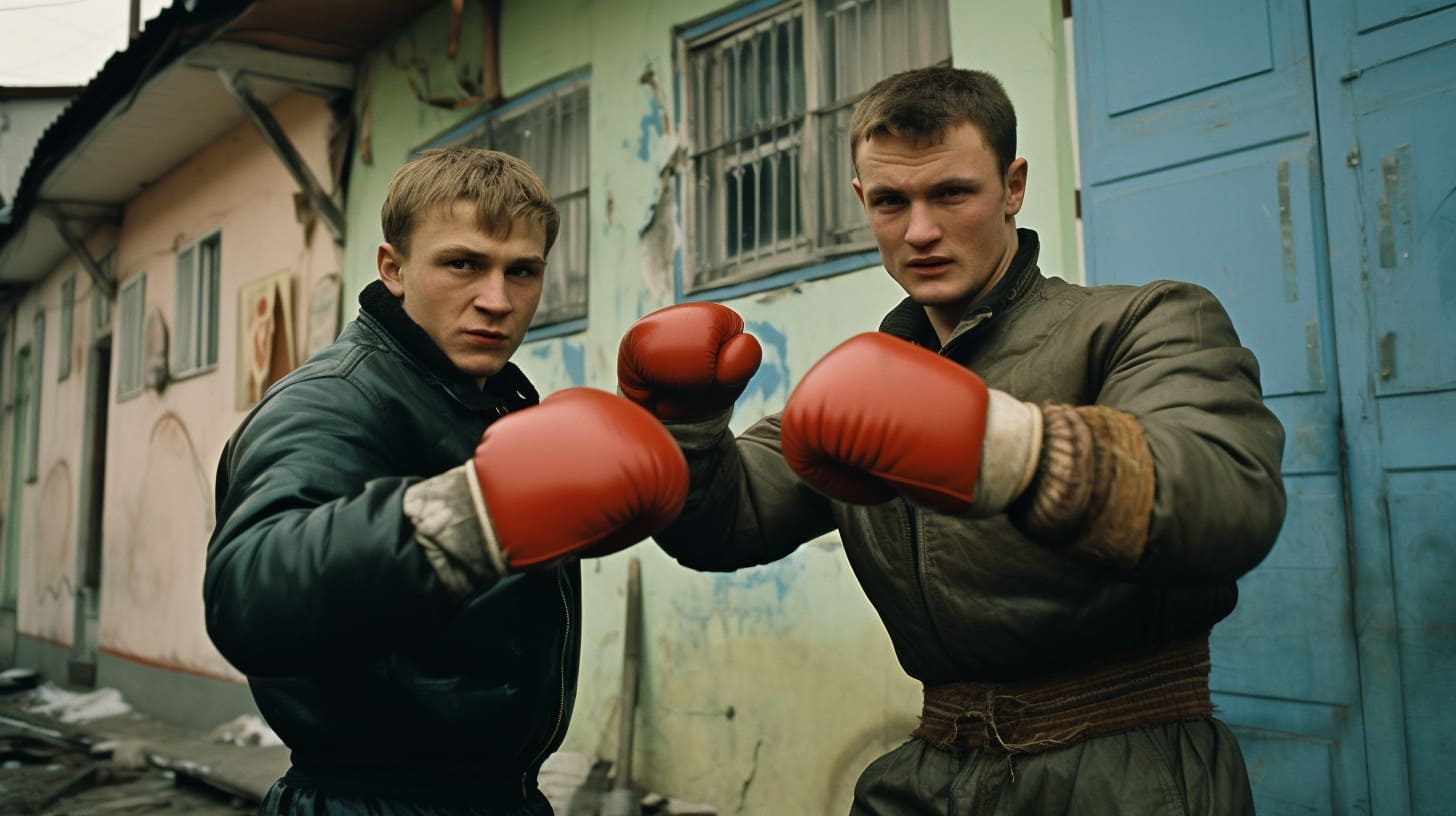
Impact of Soviet Boxing on the Global Stage:
- Incorporation of Techniques: Boxers worldwide have incorporated aspects of the Soviet style into their own techniques.
- Training Methodologies: The Soviet approach to training and preparation has influenced coaching methodologies in different countries.
- Contribution to Boxing Theory: The strategic and technical focus of Soviet boxing has enriched the theoretical understanding of the sport.
The Soviet boxing style, with its unique blend of technical mastery, strategic depth, and enduring stamina, remains a fascinating and influential chapter in the history of boxing. Its legacy continues to shape the sport, inspiring boxers and coaches around the world.
Traditional Russian Martial Arts
The traditional Russian martial arts form an essential part of the nation’s combat heritage. These ancient practices have shaped Soviet fighters’ unique boxing style, blending strength and finesse in a way that captivates the world.
Explore these martial arts:
- Russian Sambo: Combines elements of judo and wrestling – throws and ground fighting.
- Systema: A self-defense approach focusing on movement, breath, and psychological conditioning.
- Kadochnikov System: Founded by Aleksey Kadochnikov; natural body movements and real-world application.
- Dagestani Wrestling: Hailing from Dagestan; grappling techniques with emphasis on endurance and mental strength.
- Samozashchita Bez Oruzhiya (Self-Defense Without Weapons): Combines various martial arts disciplines for practical self-defense.
These practices don’t just focus on physical strength, but also on discipline, mental resilience, and strategic thinking. Influencing Soviet boxing style, their history and culture are ingrained.
So, if you’re captivated by traditional Russian martial arts and their effect on Soviet boxing, don’t miss out. Experience dynamic throws and maneuvers. Unveil your inner warrior with finesse and power. Your journey awaits!
Soviet Sports System
The Soviet Sports System was a disciplined way of developing sports. To understand its impact on Soviet boxing, let’s look at its components.
Government support provided financial backing and state-sponsored training facilities and coaches. Talent identification included a nationwide scouting system and specialized selection process. Training methods emphasized scientific principles and used advanced technology for performance analysis.
Boxing was especially important, integrating military-style techniques to foster discipline and mental toughness. A boxer from a humble background endured years of tough training under top coaches. Against all odds, he triumphed on the world stage, stunning audiences with his skill and determination.
The Soviet Sports System was influential in shaping Soviet boxing style. Its legacy is undeniable, and can be appreciated by studying its influences.
Notable Soviet Boxers
To understand notable Soviet boxers, delve into the world of ‘Soviet Boxing Style’. Learn about the renowned boxers Vasiliy Lomachenko and Nikolay Valuev. Explore their distinct techniques and contributions to the sport.
Vasiliy Lomachenko
Vasiliy Lomachenko is a renowned Soviet boxer, whose name stands out prominently in the annals of Soviet boxing. His commitment and talent have taken him far – with 396 wins in an amateur record and only one loss, he captured many titles from different weight classes.
Lomachenko’s mastery of footwork, speed, and technique makes him stand out from other boxers. He transitions between offense and defense with ease, leaving fans and opponents amazed.
His influence does not end in the ring. He is an inspiration to boxers all over the world, showing what hard work and passion can achieve. From his dynamic entrances to captivating displays of skill, he captivates everyone around him.
Don’t miss out on Vasiliy Lomachenko. His grace and ambition make him one-of-a-kind. Follow me on this exploration of this icon’s remarkable career in Soviet boxing history.
Nikolay Valuev
Nikolay Valuev’s career was remarkable. He was 7’0″ (213 cm) and weighed 330 pounds (150 kg). His huge size and powerful punches made him unbeatable.
From 1993 to 2009, Valuev had 54 fights. He won 50, and 34 were knockouts. His win rate is astounding!
Valuev was the WBA Heavyweight Champion from 2005 to 2007. This shows his dominance in the sport. He was truly one of the greatest boxers from the Soviet Union.
Remembering Valuev’s career fills us with admiration. We must not forget the legendary boxers that have shaped the fascinating world of boxing.
Impact and Legacy of Soviet Boxing Style
The Soviet boxing style had an immense effect on the sport, leaving a lasting legacy. Its distinct approach put an emphasis on technique, athleticism, and discipline. Fighters were trained to be resourceful, with a focus on footwork, defensive skills, and relentless pressure. This style transformed the sport and affected later generations of boxers around the world.
One of the main aspects of Soviet boxing was its concentration on scientific training methods. Coaches thoroughly studied opponents and created personal game plans for their fighters. This meticulousness let Soviet boxers find weaknesses and dominate the ring. The accuracy and obedience brought by this style set new benchmarks in the sport.
Another remarkable element was the use of different combat sports in their training. Soviet boxers often practiced other disciplines such as wrestling and judo to enhance their overall fighting skills. This interdisciplinary approach gave them an edge, helping them adjust to various opponents’ styles effectively.
Moreover, Soviet boxers’ commitment extended beyond physical training. The mental side was equally important – they were educated resilience, determination, and hard work from a young age. This comprehensive approach prepared them into formidable athletes who could take on both physical struggles and psychological stress inside the ring.
A true historical story is Valeriy Popenchenko’s success at the 1972 Munich Olympics. Popenchenko showed the potency of the Soviet boxing style by winning gold in the welterweight division. His impressive footwork, swift counters, and relentless pace overwhelmed his rivals throughout the tournament. Popenchenko’s triumph not only secured his place in history but also highlighted the supremacy of the Soviet boxing style on a global stage.
Comparison with Other Boxing Styles
To understand the differences between the Soviet boxing style and other boxing styles, such as the Western Boxing Style and the Cuban Boxing Style, let’s explore the specific characteristics and techniques associated with each. We will examine how the Soviet style differs from these two prominent styles, shedding light on the unique nuances and strategies employed in each.
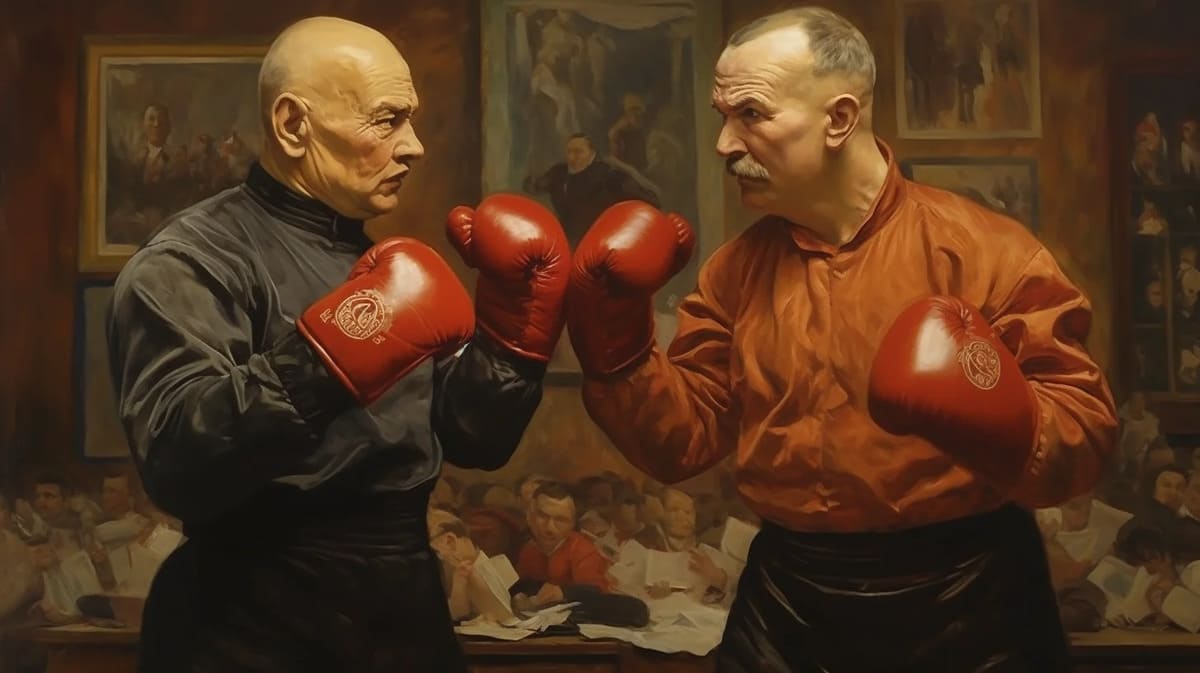
Western Boxing Style
The Western Boxing Style, also known as the “Sweet Science,” is an impressive and vibrant approach to the sport. It highlights movement, accuracy, and tactics in the ring. Here are five fundamentals that form this style:
| Footwork | Punching Techniques | Defensive Skills | Combination Attacks | Conditioning |
|---|---|---|---|---|
| Western boxers are pros at footwork, always moving around the ring to make angles and dodge their opponents’ blows. | They excel in different hitting methods, such as jabs, hooks, uppercuts, and crosses, delivering them with quickness and correctness. | Western boxers prioritize defense by blocking, slipping, weaving, and ducking to reduce their adversaries’ hits. | They have an awesome ability to blend multiple punches in fast succession. | Western boxers do intense physical training to boost their strength, endurance, and overall fitness. |
Apart from these qualities, one special part of the Western Boxing Style is its focus on counterpunching. Fighters using this style usually wait for their opponents to move before countering with a well-timed punch. This strategy keeps their opponents off balance and lets them manage the fight’s rhythm.
To further upgrade one’s performance in the Western Boxing Style:
- Mastering Timing: Knowing when to hit or defend is critical in this style. Do drills that develop skills for making quick decisions.
- Enhancing Agility: Include agility exercises like ladder drills or cone drills in training sessions to become more light and evasive.
- Developing Power: Strengthening core muscles through exercises like medicine ball throws can augment punching power.
- Studying Opponents: Study your opponents’ fighting styles beforehand so you can use their weaknesses during matches.
Executing these tips will enhance a boxer’s aptitudes within the Western Boxing Style by improving timing, agility, power, and overall fight knowledge. Thus, they will be able to demonstrate the real heart and efficiency of this captivating style.
Conclusion
The Soviet boxing style stands out in the world of boxing. It is characterized by technique, strategy, and discipline. Soviet boxers have great speed, precision, and power.
Defense is a major part of this style. Boxers move and slip punches with skill. This way, they can counterattack without getting hit. Defense helps them control the bout and wear down opponents.
Offensive tactics come into play, too. Rapid combinations with perfect timing and accuracy are used. Footwork and punch transitions create pressure on the opponent.
Mentally, Soviet boxers stay calm under pressure and make fast decisions. This mindset helps them deal with various situations in the ring.
FAQ’s
What is the Soviet boxing style?
The Soviet boxing style refers to the boxing techniques and tactics that were developed and taught in the former Soviet Union. It emphasizes a strong emphasis on technique, discipline, and endurance.
What are the key characteristics of the Soviet boxing style?
What are the key characteristics of the Soviet boxing style?
The key characteristics of the Soviet boxing style include a focus on footwork, quick and precise combinations, excellent defensive skills, and the ability to adapt to different opponents and situations.
Are there any famous boxers who trained in the Soviet boxing style?
Yes, there are numerous famous boxers who trained in the Soviet boxing style, including legends like Vasiliy Lomachenko, Gennady Golovkin, and Sergey Kovalev. These boxers have showcased the effectiveness of the Soviet style with their remarkable achievements in the ring.
Can the Soviet boxing style be adopted by modern boxers?
Yes, many modern boxers incorporate elements of the Soviet boxing style into their training and fighting techniques. The emphasis on technique, footwork, and adaptability remains relevant and can greatly benefit aspiring boxers.
How can one learn the Soviet boxing style?
To learn the Soviet boxing style, it is recommended to find experienced trainers or coaches who specialize in this technique. They can provide guidance on the specific drills and tactics associated with the style and help individuals develop the necessary skills.
Additional Resources
If you’re fascinated by the Soviet boxing style and hungry for more knowledge, then you’re in luck! We’ve rounded up a plethora of resources that’ll give you a deeper dive into the techniques, history, and legends of this unique boxing tradition. Whether you’re a casual fan, a history buff, or an up-and-coming fighter looking to sharpen your skills, these resources are your ticket to gaining a broader understanding and appreciation of the Soviet style.
Books to Enhance Your Knowledge:
-
“Pavel Kamanin: Boxing Lessons” by Pavel Kamanin
- A comprehensive guide by a Soviet boxing legend, offering insights into the training methodologies and strategic approaches of the Soviet boxing schools.
-
“The Russian School of Boxing” by Alexei Frolov
- This book delves into the history and philosophy of Russian boxing, shedding light on how and why the Soviet style developed into what it is today.
Must-Watch Documentaries:
-
“Champions Forever: The Definitive Look At The Legends Of Boxing”
- Discover how Soviet boxers compare with some of the world’s greatest. Although not exclusively about Soviet boxing, it offers a valuable context.
-
“Assault In The Ring”
- A gripping documentary that, while focusing on a controversial fight, indirectly touches on different boxing styles and their histories, including the Soviet way.
Training Guides:
-
“Russian Boxing: Secrets of the Training Room” (eBook)
- An insight-packed eBook that provides tips and practices from Russian boxing coaches.
-
“Boxing Mastery: Advanced Technique, Tactics, and Strategies from the Sweet Science” by Mark Hatmaker
- Although not exclusively about Soviet boxing, this guide deconstructs advanced techniques that may parallel the precision of Soviet training.
Educational Articles:
-
“The Soviet School of Boxing” on IZ RUSSIA
- A brief overview that gives a snapshot of the Soviet boxing ethos.
- Read Article
-
“Understanding the Soviet Boxing Style” on Science of the Fist
- Get to grips with the tactical and technical aspects of the Soviet boxing style.
- Read Article
Engaging Videos for Visual Learners:
-
“Anatomy of a Fighter: Soviet Boxing Series”
- A YouTube series that looks at the lives and training regimens of boxers who trained under the Soviet system.
-
“The Soviet Boxers: Training and Technique” on Fight Hub TV
- A rich collection of sparring videos, training sessions, and interviews with Soviet-era champions.
Dive into these resources and you’ll not only round out your knowledge of Soviet boxing style, you might just find yourself shadowboxing to the tune of the greats. Happy learning!
